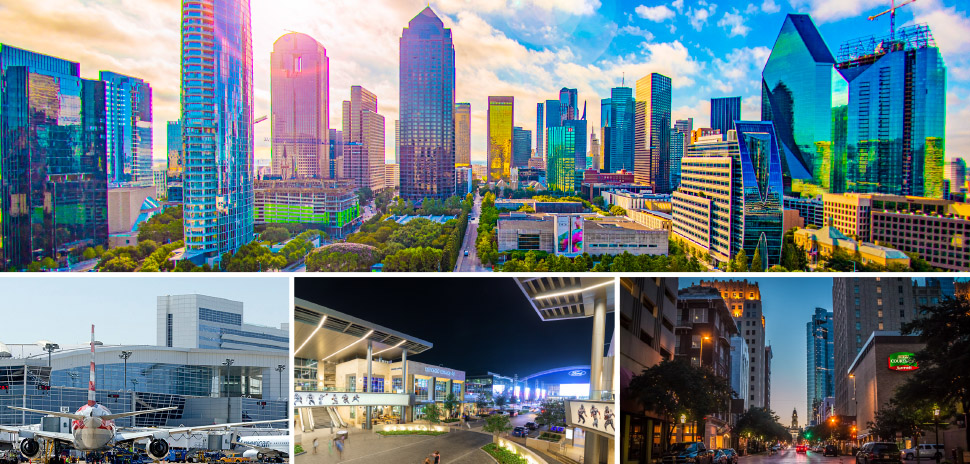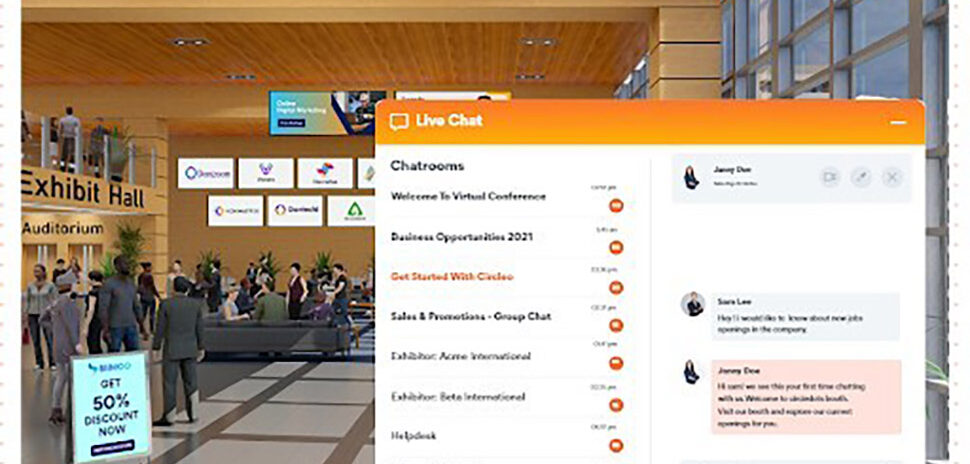Dallas-Fort Worth closed out 2019 with robust economic growth and held its rankings as the top metro area in the U.S. for job growth and destination for corporate moves and expansions.
In 2019, McKesson and Core-Mark moved their Fortune 500 HQs to the Dallas region. The moves brought the region’s total to 24 Fortune 500 headquarters, and McKesson made the region home to three Fortune 10 HQs: Exxon, AT&T, and McKesson—no other place has more than one Fortune 10 HQ. Uber joined Salesforce, Microsoft, McLaren, USAA, Chase, Allstate, and others in expansions in DFW. Closing out the end of 2019, Charles Schwab announced its intention to relocate its Fortune 500 HQ from San Francisco to Westlake.
All that economic growth contributed to the creation of 128,000 new jobs for the region—more than the number of jobs created in Chicago, Austin, Denver, and Nashville combined. To put DFW’s massive job growth into perspective, the region’s 128,000 new jobs was greater than the job growth of 47 states, only less than the states of Texas, California, and Florida. DFW’s job growth has led all U.S. metro areas for each of the last three years, from 2017-2019. In the 2010s, DFW landed more than 140 corporate headquarters and created one million new jobs.
All that job creation contributed to a population growth to about 7.7 million by the end of 2019, keeping DFW firmly in place as the fourth-largest market in the U.S.
At the start of 2020, many headquarters, major office, and industrial projects were thinking of DFW. But as the pandemic spread into the country and non-essential businesses in Dallas closed after March 13, we saw many of those projects pause. We have seen the same trend nationally. In a recent survey by the Site Selectors Guild, whose members the DRC works closely with on-location projects, 34 percent said that companies continue to pause site selection projects.
While many projects are now in a holding pattern, the years of steady economic success and our region’s brand as a great location have provided much-needed momentum for 2020. We expect most projects to return, including those that were about to announce decisions. Last month, Guild members reported that 61 percent of companies are starting to move forward with site selection projects. That is great news. Consultants believe, however, that it will take until spring of 2021 before the corporate location pipeline is fully active.
Today, the DRC is tracking about 80 total projects, and 30 of those started after March 13. Projects include two significant tech firms considering a major new U.S. office to handle growth; a New York financial services company considering a headquarters move; two 1,500-job corporate offices (“HQ2” style) for Fortune-ranked companies; and automotive, aerospace and biopharma manufacturing projects.
The DRC is still tracking pre-pandemic active projects, including a Fortune 500 headquarters relocation, a California headquarters relocation, significant expansions of notable technology companies, a major food company manufacturer, and large distribution and logistics centers.
And we expect many more companies to examine DFW in the second half of 2020. Dallas’ brand as a major technology hub has also elevated, with high profile announcements like Uber’s Dallas location and Facebook naming Dallas as one of three great tech talent markets where it will hire and grow.
Besides headquarters and tech companies, DFW will appeal to manufacturers, logistics, data centers, and other operations seeking to reposition supply chains, diversify locations or localize production as a long-term response to the crisis.
We are still Dallas, DFW, and Texas. The comparative advantages we have leveraged to win companies and grow in recent years remain and are now likely enhanced. Site consultants suggest that mid-size cities, suburban, and rural areas will be attractive to companies and employees that are now concerned about density issues and deteriorating fiscal conditions in high-cost, crowded locations. DFW will be an even stronger option and remain relatively favorable on those elevated issues, and we plan to be very busy over the next several months.
A version of this story first published in the Summer 2020 edition of the Dallas-Fort Worth Real Estate Review.
Read the digital edition of Dallas Innovates’ sister publication, the Real Estate Review, on Issuu.
Sign up for the digital alert here.
![]()
Get on the list.
Dallas Innovates, every day.
Sign up to keep your eye on what’s new and next in Dallas-Fort Worth, every day.
































